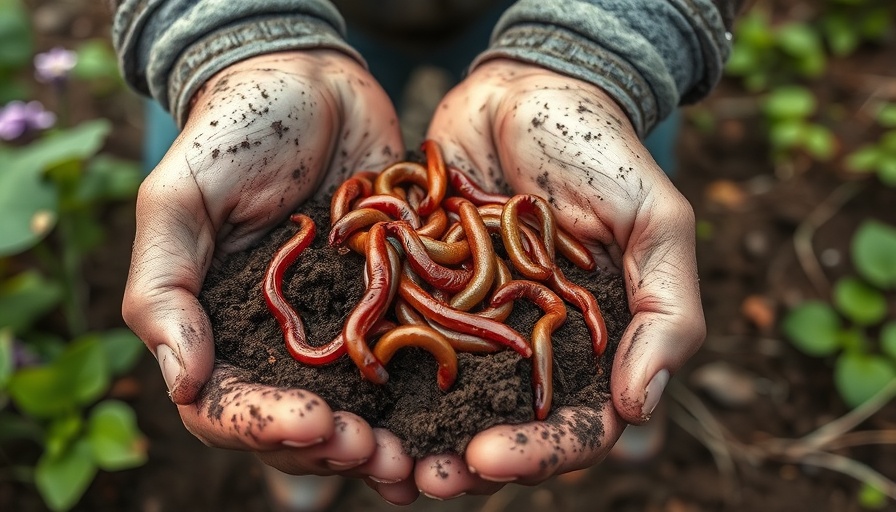
Worms vs. Grubs: Friends or Foes in Your Garden?
When you dig into your garden or turn over a patch of sod, you might be amazed to find squirming beings lurking beneath the surface. As a homeowner and gardener, you may experience mixed emotions—a spark of curiosity yet also a hint of concern. Identifying whether these underground dwellers are allies that enrich your soil or hidden foes that damage your landscape is crucial. It can mean the difference between a thriving garden and one plagued with pests.
The Key Differences: Identifying Earthworms and Grubs
At first glance, worms and grubs may seem remarkably similar, yet they exhibit significant differences that are essential for effective garden management. Here’s how to tell them apart:
Shape
Earthworms are long and cylindrical, their bodies marked by clear, segmented appearances. In contrast, grub worms curl up into characteristic “C” shapes, featuring soft, curvature without evident segments.
Size
A mature earthworm can grow up to 14 inches long, as reported by National Geographic. Conversely, grub worms typically remain under 2 inches in length, making size a noteworthy distinction.
Color
Earthworms flaunt a reddish-brown or pinkish-gray hue, while grubs present a pale white or cream body, with dark heads and tiny legs that further differentiate them.
Movement
Earthworms glide smoothly through soil using muscle contractions, making them agile and effective soil aerators. Grubs, however, often crawl awkwardly, typically maintaining their curled posture, which makes them less adept at healthy soil interaction.
Habitat and Lifecycles
Worms tend to prefer moist, deeper soil layers, whereas grubs are commonly found clustered near plant roots. Understanding their lifecycles enhances garden care; while earthworms reproduce via cocoons, grubs are the larvae of beetles and transition into pupae.
The Vital Role of Earthworms in Your Garden
Earthworms are the unsung heroes of any garden ecosystem. They aerate the soil, allowing air and nutrients to penetrate deep into the ground. As they consume organic matter, they break it down into nutrient-rich casts that improve soil structure—a boon for plants. Adding organic materials like compost or leaves encourages a thriving earthworm population.
How Grubs Can Undermine Your Garden
On the other hand, grubs can be a garden's worst nightmare. As the larvae of beetles, they feed on roots and can cause considerable damage to grass and plants. Recognizing the presence of grubs early allows for prompt action. Homeowners often find inviting beneficial worms while keeping an eye out for the signs of improper soil conditions that grubs thrive in.
What Can Homeowners Do?
Understanding the difference between worms and grubs arms homeowners with the knowledge to cultivate a healthful garden. Here’s what you can implement:
- Encourage Earthworms: Use organic matter, maintain moisture, and apply mulch to create a hospitable environment.
- Avoid Chemicals: Limiting the use of pesticides can help maintain healthy soil ecosystems.
- Regular Monitoring: Make a habit of inspecting your soil's health; identifying grubs before they establish themselves can save your landscape.
Conclusion: Protecting Your Garden’s Integrity
In the world beneath our feet, worms and grubs play pivotal roles that impact how well our gardens thrive. Arm yourself with the knowledge to differentiate the helpful from the harmful through identification. Your efforts to create a garden environment that welcomes beneficial earthworms while managing pest threats will lead to healthier, more vibrant landscapes.
Engaging with your garden effectively requires a blend of vigilance and understanding. Take action today—consider the health of your soil and explore ways to enrich it. The reward is not just a more beautiful garden but a thriving ecosystem that supports the balance of nature.
 Add Row
Add Row  Add
Add 




Write A Comment